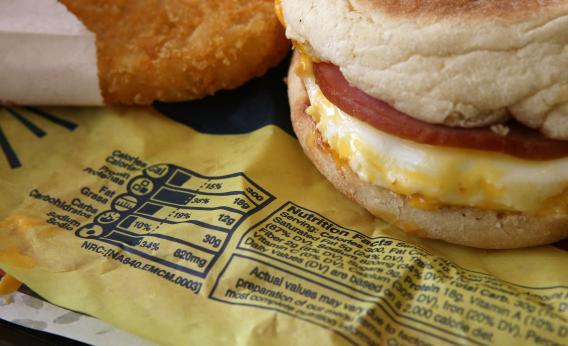One of the least-noticed elements of Obamacare is a federal rule requiring chain restaurants to post calorie counts on their menus starting in 2013. Similar laws have been enacted already on a state or local basis in several jurisdictions, but it’s only now that the policy is going national that it really makes sense for companies to start building strategic decisions around it.
That corporate decision-making is the key to whether the new rule drives meaningful gains in public health. If chains continue to emphasize maximum fat at minimum cost, eating habits probably won’t change much. But if the labeling regulations really emphasize the dangers of high-fat foods and the benefits of fruits and vegetables, it could encourage healthier eating.
One chain that seems potentially poised to benefit is Chop’t Creative Salad Company, a D.C. and New York chain that’s a personal lunchtime favorite of mine and sells what some would consider outrageously expensive salads. When I asked founder Tony Shure about the new law last week, he wasn’t incredibly eager to engage, noting that “very few people find politics appetizing,” an allusion to the significant backlash against restaurateurs who’ve been whining about higher labor costs as a result of the Affordable Care Act. But he did say that “the days of secret sauce are over,” and clearly health-conscious consumers are an important part of their market.
Still, salads are a very small part of the chain restaurant industry. Sweetgreen, a rival salad company, has 15 locations in the D.C. and Philadelphia areas and offers slightly smaller salads. Mix’t Greens, with a somewhat higher price point, withdrew from the East Coast but seems to be doing all right in California. Even Freshii—the most aggressively expansionist of the salad chains—has just more than 30 U.S. locations.
But the giants that dominate the chain restaurant market are adjusting to menu labeling, too. McDonalds, smartly, decided to get ahead of the curve by launching menu labeling even before the election so the company could start the learning process before the competition. They’re also touting a “Favorites Under 400” list of low-calorie options. Tellingly, packaged-food giant Unilever promoted a Seductive Nutrition Challenge over the summer to encourage restaurateurs to try to reformulate existing menu favorites into lower-calorie versions.
These upstream impacts on business thinking are important because most studies of consumer behavior show that the menu information per se causes only small changes in consumer decision-making in either adults or children.
Historically, a big difference between home cooking and dining out is the opacity of the production process. That means a major competitive advantage in the food game is finding ways to pack more cheap, unhealthful fats into foods than people would be comfortable deliberately serving themselves. Whole menus and franchises have been built around this, and just putting the numbers on the wall doesn’t change that. But chain restaurants are the factories of our time, and with new rules they’ll have reason to turn their R&D departments to the task of developing healthier options. And if the McDonaldses and Pizza Huts of the world can’t find a way to adapt, they’re potentially vulnerable to disruption by the handful of chains who’ve already hit the ground running with concepts that are more health-friendly.
There’s no guarantee, but if positive change does come to people’s eating habits, that will be the mechanism. Efforts like Slow Food USA or Mother Jones food writer Tom Philpot’s dictum that “from-scratch cooking is absolutely the most powerful tool we have for improving our diets and resisting the food industry’s most awful offerings” are patently unrealistic.
Many people, myself included, enjoy cooking as a hobby. And it’s common for mass production to coexist indefinitely alongside artisanal methods or hobbies. Neither knitting nor custom-built furniture has vanished from the landscape, but home production of these items isn’t economically significant. Living standards improve because mass producers get better at making things, not because people turn backward to inefficient small-scale methods. Eating is no different. If the worst of fast food is replaced by anything, it will be better fast food. Companies are out there trying to make it happen, and so far they’re succeeding in niche markets. Policies forcing more and more obvious disclosure of nutritional information should help the process along by at least creating a situation where firms that succeed in designing more healthful options have a way to credibly turn that into a business advantage.
It very well might not work. But diet and nutrition are arguably more important drivers of health than health care per se, and almost all of us eat more often than we see the doctor. So if a changing regulatory environment does encourage shifts in business models, this relatively undebated element of the new health care law could end up being one of the most significant.
